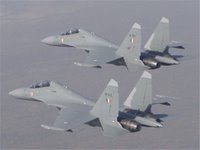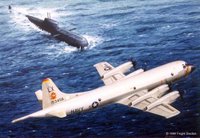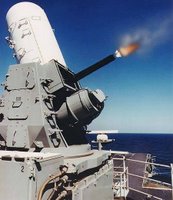The Bangladesh Rifles’ torture and killing of a senior BSF officer was absolutely reprehensible. However, the response of the Government of India, which only “lodged a strong protest” with Dhaka, was appalling to say the least. Even in 2001, when Bangladesh Rifles (BDR) soldiers killed 16 BSF jawans in Pyridwah village in Meghalaya, the incident was met with the same weak-kneed response that has come to characterise the reactions of successive Indian Governments to such killings. It is a crying shame that India, a country that calls itself a “regional power” and a “future economic giant” continues to be held hostage by a non-entity like Bangladesh, which has a weak economy (totally depandent on the Indian economy), a tiny military (surrounded on three sides by India on land, and facing a powerful Indian Navy on the fourth), and no international support to speak of (Pakistan? Puh-leeez!). Maybe a more fitting response is in order here – economic sanctions, or even a limited-intensity military attack to neutralise BDR positions inside Bangladesh – a response that will send out a clear message, "Pull off another stunt like this and we will destroy you". I'm sure a tight jhapad will show 'em who is boss.
Saturday, May 14, 2005
Sould India Buy F/A-18s and F-16s from the US?
 Ever since the US agreed to sell F-16 fighter aircraft to Pakistan, there has been a spate of reports in the media about the alleged proposal by the US to sell the more advanced Boeing F/A-18 E/F "Super Hornet" (left) fighter aircraft to India. However, the deal is not likely to materialise (and shouldn't be allowed to either), for several reasons. Firstly, the F/A-18 E/F and the Russian Su-30MKI share roughly the same mission profile that includes air superiority, close and deep air support, and day and night strike missions, to name a few. Deploying two similar aircraft to carry out similar missions would serve no useful purpose for obvious reasons and prove to be a logistical nightmare for the Air Force.
Ever since the US agreed to sell F-16 fighter aircraft to Pakistan, there has been a spate of reports in the media about the alleged proposal by the US to sell the more advanced Boeing F/A-18 E/F "Super Hornet" (left) fighter aircraft to India. However, the deal is not likely to materialise (and shouldn't be allowed to either), for several reasons. Firstly, the F/A-18 E/F and the Russian Su-30MKI share roughly the same mission profile that includes air superiority, close and deep air support, and day and night strike missions, to name a few. Deploying two similar aircraft to carry out similar missions would serve no useful purpose for obvious reasons and prove to be a logistical nightmare for the Air Force. Secondly, The Su-30MKI (left) is far superior to the F/A-18 E/F when it comes to combat capability, on account of its ability to carry far greater payload as compared to the F/A-18 E/F, a normal operating range of more than 3000 km (and a maximum of 5200 km), as opposed to about 390 km for the F/A-18 E/F, an extremely powerful radar, and thrust vectoring engines which give it class-leading manoeuvrability no western aircraft can match. All these features, combined with a superb mix of Russian, Israeli, and Indian avionics make the Su-30MKI one of the finest fighter aircraft in the world, if not the very best. In fact, the Su-30MKI is so advanced, that not even the Russians (let alone the Chinese) have anything in their inventory which can match it. It is closer in performance to the Su-37 and Su-35, rather than to Russian or Chinese Su-30s. Moreover, at $30 million apiece, the Indian manufactured version of the Su-30MKI comes relatively cheap, costing almost half as much as the F/A-18 E/F, which is priced at $57 million.
Secondly, The Su-30MKI (left) is far superior to the F/A-18 E/F when it comes to combat capability, on account of its ability to carry far greater payload as compared to the F/A-18 E/F, a normal operating range of more than 3000 km (and a maximum of 5200 km), as opposed to about 390 km for the F/A-18 E/F, an extremely powerful radar, and thrust vectoring engines which give it class-leading manoeuvrability no western aircraft can match. All these features, combined with a superb mix of Russian, Israeli, and Indian avionics make the Su-30MKI one of the finest fighter aircraft in the world, if not the very best. In fact, the Su-30MKI is so advanced, that not even the Russians (let alone the Chinese) have anything in their inventory which can match it. It is closer in performance to the Su-37 and Su-35, rather than to Russian or Chinese Su-30s. Moreover, at $30 million apiece, the Indian manufactured version of the Su-30MKI comes relatively cheap, costing almost half as much as the F/A-18 E/F, which is priced at $57 million.U.S. Arms Sales to Pakistan: How Much Should India Worry?
 Most of the media attention has undoubtedly been focused on the F-16s, and the Indian government’s strident opposition to their sale has got more to do with bringing Indian influence on Pakistan’s move to acquire any arms than with any tactical disadvantage the Indian Air Force (IAF) might face due to these aircraft. The effectiveness of this move is evident from the fact that Belgium recently refused to sell its old F-16s to Pakistan, stating that such a sale would jeopardise the ongoing peace process with India. Even though the Bush Administration has now agreed to sell these aircraft to Pakistan, the final sale of the aircraft depends on the approval of the Congress, a procedure likely to take at least two years. Thus, for the time being, it looks as if Pakistan is not getting a single F-16. Even if the Pakistan Air Force (PAF) receives some F-16s, the aircraft, though potent, will be no match for the IAF’s MiG-29 and Su-30MKI fighters. As of now, the PAF does not have any Beyond Visual Range (BVR) missiles equipping the F-16s, which are the old block A and B type, while the IAF’s MiG-21s, MiG-29s, Mirage-2000s, and Su-30MKIs are bristling with them.
Most of the media attention has undoubtedly been focused on the F-16s, and the Indian government’s strident opposition to their sale has got more to do with bringing Indian influence on Pakistan’s move to acquire any arms than with any tactical disadvantage the Indian Air Force (IAF) might face due to these aircraft. The effectiveness of this move is evident from the fact that Belgium recently refused to sell its old F-16s to Pakistan, stating that such a sale would jeopardise the ongoing peace process with India. Even though the Bush Administration has now agreed to sell these aircraft to Pakistan, the final sale of the aircraft depends on the approval of the Congress, a procedure likely to take at least two years. Thus, for the time being, it looks as if Pakistan is not getting a single F-16. Even if the Pakistan Air Force (PAF) receives some F-16s, the aircraft, though potent, will be no match for the IAF’s MiG-29 and Su-30MKI fighters. As of now, the PAF does not have any Beyond Visual Range (BVR) missiles equipping the F-16s, which are the old block A and B type, while the IAF’s MiG-21s, MiG-29s, Mirage-2000s, and Su-30MKIs are bristling with them.
 Next in line is the Lockheed P-3C “Orion”. While the Orion is an excellent anti-submarine and anti-ship platform, it will be useless unless provided with air cover by the PAF. The PAF is not very big, nor on the cutting edge of technology, and will most likely have its hands too full combating the IAF to provide air cover to the Orions. Moreover, Pakistani naval aviation does not have dedicated fighter/interceptor aircraft in its inventory, as opposed to the Indian naval aviation, which has land-based Jaguars and Su-30MKIs along with carrier-based aircraft like Sea Harriers from the INS Viraat and shortly arriving MiG-29Ks from the Gorshkov (INS Vikramaditya), all of which have BVR capability (The Harriers are being upgraded to carry BVR missiles). These aircraft, coupled with airborne early warning aircraft like the Ka-31 helicopters (9 are already in service) and the Israeli Phalcon (3 have been ordered for the IAF), make the Indian naval aviation a potent force, rendering the lumbering Orions little more than sitting ducks. How the Indian Navy would cope with coordinated saturation attacks from many directions (for example by dozens of Mirage fighters armed with medium range Exocet anti-ship missiles, three to four Orions armed with long range Harpoon anti-ship missiles and anything else that could be thrown in to the arena) would be a matter of clever tactics and a battle of wits.
Next in line is the Lockheed P-3C “Orion”. While the Orion is an excellent anti-submarine and anti-ship platform, it will be useless unless provided with air cover by the PAF. The PAF is not very big, nor on the cutting edge of technology, and will most likely have its hands too full combating the IAF to provide air cover to the Orions. Moreover, Pakistani naval aviation does not have dedicated fighter/interceptor aircraft in its inventory, as opposed to the Indian naval aviation, which has land-based Jaguars and Su-30MKIs along with carrier-based aircraft like Sea Harriers from the INS Viraat and shortly arriving MiG-29Ks from the Gorshkov (INS Vikramaditya), all of which have BVR capability (The Harriers are being upgraded to carry BVR missiles). These aircraft, coupled with airborne early warning aircraft like the Ka-31 helicopters (9 are already in service) and the Israeli Phalcon (3 have been ordered for the IAF), make the Indian naval aviation a potent force, rendering the lumbering Orions little more than sitting ducks. How the Indian Navy would cope with coordinated saturation attacks from many directions (for example by dozens of Mirage fighters armed with medium range Exocet anti-ship missiles, three to four Orions armed with long range Harpoon anti-ship missiles and anything else that could be thrown in to the arena) would be a matter of clever tactics and a battle of wits.
 The third system is the M-220 Tube Launched, Optically Tracked, Wire Guided (TOW) Missile. It is primarily used in antitank warfare, and is a line of sight, wire-guided weapon. Current versions are capable of penetrating more than 30 inches of armour, or “any 1990s tank”, at a maximum range of more than 3,000 meters. Infantrymen using a tripod, as well from vehicles and helicopters, can fire it. It’s combat record, starting from Vietnam and continuing beyond the Gulf Wars shows it to be an overwhelming success. It was hardly influenced by the advanced counter-measures the Iraqi Army tried deploying against it. 2000 of these missiles in the hands of Pakistani soldiers will pose a grave threat to Indian armoured columns deployed in the deserts of Rajasthan and Gujarat and the plains of Punjab. Though India possesses an equally successful system, the European “Milan”, Pakistan’s acquisition of the TOW is a genuine cause of worry for the Indian Army. With hardly any Indian opposition to its sale, the deal looks likely to fall through, and many Indian tanks might fall prey to Pakistani TOWs in the event of a war.
The third system is the M-220 Tube Launched, Optically Tracked, Wire Guided (TOW) Missile. It is primarily used in antitank warfare, and is a line of sight, wire-guided weapon. Current versions are capable of penetrating more than 30 inches of armour, or “any 1990s tank”, at a maximum range of more than 3,000 meters. Infantrymen using a tripod, as well from vehicles and helicopters, can fire it. It’s combat record, starting from Vietnam and continuing beyond the Gulf Wars shows it to be an overwhelming success. It was hardly influenced by the advanced counter-measures the Iraqi Army tried deploying against it. 2000 of these missiles in the hands of Pakistani soldiers will pose a grave threat to Indian armoured columns deployed in the deserts of Rajasthan and Gujarat and the plains of Punjab. Though India possesses an equally successful system, the European “Milan”, Pakistan’s acquisition of the TOW is a genuine cause of worry for the Indian Army. With hardly any Indian opposition to its sale, the deal looks likely to fall through, and many Indian tanks might fall prey to Pakistani TOWs in the event of a war.
 The last item on the list is the Mk-15 “Phalanx” Close-In Weapon System (CIWS). This a fast-reaction, rapid-fire gun system that provides Navy ships with a terminal defence against anti-ship missiles that have penetrated other fleet defences. The radar guided 7-barrell-gun fires 20mm ammunition at either 3,000 or 4,500 rounds-per-minute with a burst length of continuous, 60, or 100 rounds. However, the Phalanx alone is not enough to defend a ship against a barrage of anti-ship missiles. Only those few missiles, which have penetrated outer fleet defences like carrier-based aircraft and short to medium range missiles, can be stopped by the Phalanx. Since Pakistan possesses no carrier-based aircraft, which is the outermost (and probably the most important) ring of such defences, their Navy ships will face a constant threat from Indian anti-ship missiles. Moreover, the ability of the Phalanx to handle missiles like the BrahMos, which fly at high supersonic speeds of more than Mach-3, is suspect.
The last item on the list is the Mk-15 “Phalanx” Close-In Weapon System (CIWS). This a fast-reaction, rapid-fire gun system that provides Navy ships with a terminal defence against anti-ship missiles that have penetrated other fleet defences. The radar guided 7-barrell-gun fires 20mm ammunition at either 3,000 or 4,500 rounds-per-minute with a burst length of continuous, 60, or 100 rounds. However, the Phalanx alone is not enough to defend a ship against a barrage of anti-ship missiles. Only those few missiles, which have penetrated outer fleet defences like carrier-based aircraft and short to medium range missiles, can be stopped by the Phalanx. Since Pakistan possesses no carrier-based aircraft, which is the outermost (and probably the most important) ring of such defences, their Navy ships will face a constant threat from Indian anti-ship missiles. Moreover, the ability of the Phalanx to handle missiles like the BrahMos, which fly at high supersonic speeds of more than Mach-3, is suspect.
Thus, though America’s recent sale of advanced weapon systems to Pakistan is a cause of worry for India, the situation is not as bad as it has been made out to be. The ability of these weapons to help Pakistani forces gain decisive tactical advantage in a battlefield is hindered by the superior technology and numbers of Indian weapons as well as the rigorous training the Indian armed forces receive. However, wars have a habit of throwing up some very unpleasant surprises and ultimately it will be our ability to cope with them that will decide the outcome of any future conflict.
